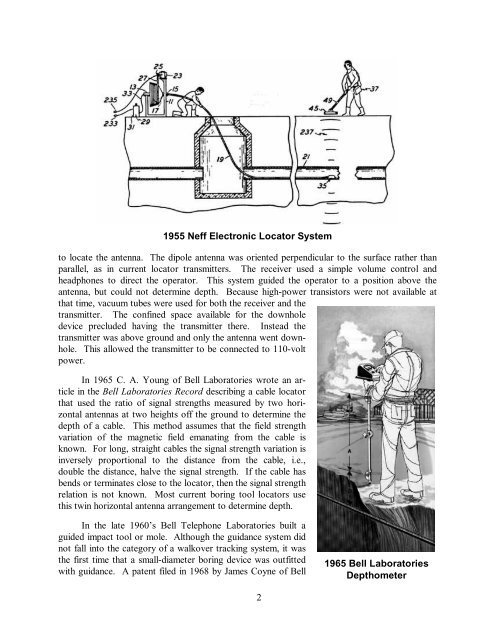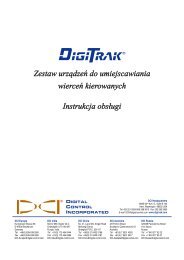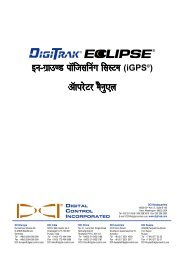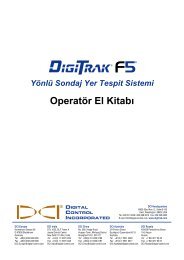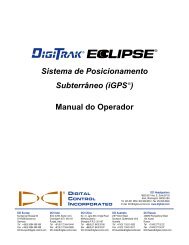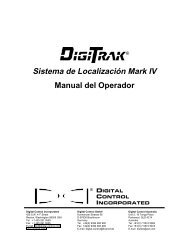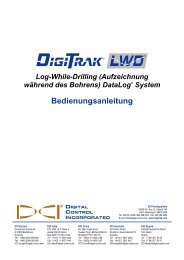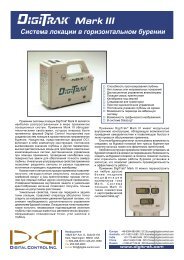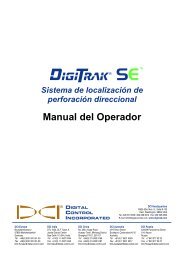history of walkover locating technology - Digital Control Inc.
history of walkover locating technology - Digital Control Inc.
history of walkover locating technology - Digital Control Inc.
You also want an ePaper? Increase the reach of your titles
YUMPU automatically turns print PDFs into web optimized ePapers that Google loves.
1955 Neff Electronic Locator Systemto locate the antenna. The dipole antenna was oriented perpendicular to the surface rather thanparallel, as in current locator transmitters. The receiver used a simple volume control andheadphones to direct the operator. This system guided the operator to a position above theantenna, but could not determine depth. Because high-power transistors were not available atthat time, vacuum tubes were used for both the receiver and thetransmitter. The confined space available for the downholedevice precluded having the transmitter there. Instead thetransmitter was above ground and only the antenna went downhole.This allowed the transmitter to be connected to 110-voltpower.In 1965 C. A. Young <strong>of</strong> Bell Laboratories wrote an articlein the Bell Laboratories Record describing a cable locatorthat used the ratio <strong>of</strong> signal strengths measured by two horizontalantennas at two heights <strong>of</strong>f the ground to determine thedepth <strong>of</strong> a cable. This method assumes that the field strengthvariation <strong>of</strong> the magnetic field emanating from the cable isknown. For long, straight cables the signal strength variation isinversely proportional to the distance from the cable, i.e.,double the distance, halve the signal strength. If the cable hasbends or terminates close to the locator, then the signal strengthrelation is not known. Most current boring tool locators usethis twin horizontal antenna arrangement to determine depth.In the late 1960’s Bell Telephone Laboratories built aguided impact tool or mole. Although the guidance system didnot fall into the category <strong>of</strong> a <strong>walkover</strong> tracking system, it wasthe first time that a small-diameter boring device was outfittedwith guidance. A patent filed in 1968 by James Coyne <strong>of</strong> Bell1965 Bell LaboratoriesDepthometer2


